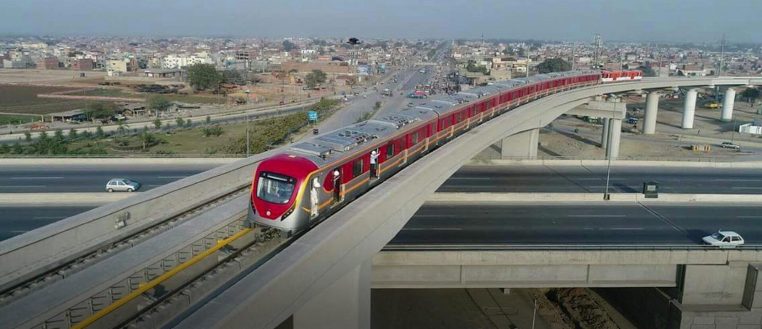One of the symbols of PAK-CHINA’s friendship is the Orange Line metro train (OLMT) in Lahore. It was the first project under the CPEC (China-Pakistan Economic Corridor). This project was specifically designed for easy and time-saving commuting within the city. The Orange Train Lahore aimed to control the traffic and make traveling easier. The average estimate of the orange train in Lahore was 1.5 billion dollars.
Some interesting facts about the orange train Lahore were set to transform the traffic and mass-transit system. It was the first-ever electric train in Pakistan designed for mass transit. Orange Train Lahore can cover its entire route in just 45 minutes and has the capacity to carry around 250,000 passengers per day. It can travel up to 80km per hour.
Orange Train Lahore’s first run trial on December 10, 2019, was successful. This article will provide you with an overview of the Orange Train Lahore.
Background of Orange Train Lahore
The construction of the Orange Train Lahore was started in 2015 when China gave a loan of 1.5 billion through the Exim Bank. The contract for the construction of the train was given to Habib Construction Services for 150 million. But later in 2016, it was given to the ZKB engineers who constructed the railway line from Chauburji to Ali town, and a budget of 11.39 billion was spent on this.
Later, in 2017, Pakistan imported the first set of 27 five-bogie orange trains from the Chinese CRRC Zhuzhou locomotive company. However, after so many test runs in 2018, it was successful in 2019.
Features and Design of Orange Train Lahore
Purpose of Orange Train Lahore
Orange Train Lahore was constructed to control the air quality of Lahore. It was considered that when the train is constructed, the people will prefer to commute via the train rather than in their own vehicles, which will ultimately help improve the air quality of Lahore.
Total Stations
The railway line of the train has 24 elevated and two underground stations and a total of 26 stations spread over 27km. The underground stations are well maintained with automated doors and an air-conditioned environment.
Underground Stations
The Anarkarli and central stations are underground. The length of the underground stations is 121.5 and 161.6 meters, respectively. The critical touch points of the Orange Train Lahore include Shalimar Gardens, Ali Town, the University of Engineering and Technology, and Chauburji it is also connected to the Lahore metro bus via an underground station walkway that links the MAO College
Design of the Orange Train Lahore
The design of the Orange Train Lahore was based on modern and international standards. The trains are driverless and fully automated, and each train has 5-bogie with four doors that can accommodate around 200 passengers. The trains have a fully air-conditioned system with stainless steel bodies and lightened with LED lights.
Operation of Train
The train uses 75 MW of electricity to operate or function. Eight grid stations supply the electricity to the orange train in Lahore. These stations include the UET stations and three stations from the Shahnoor stop. However, alternative energy sources have used to maintain the functionality of the Orange Train Lahore.
The train operates for 18 hours a day, and its timetable is from 5:30 am to 11:30 pm. The important factor of the train is its speed, which determines its efficiency. The first station is Dera Gujran, and the last station of the train is Ali Town Station. The speed of the train is approximately 80km per hour, which means it requires only 45 minutes to travel from Dera Gujran to Ali town via the Orange train to Lahore
So, these were all the essential factors of Pakistan’s first mass-transit system. That has made commuting way easier for the residents of Lahore city.








